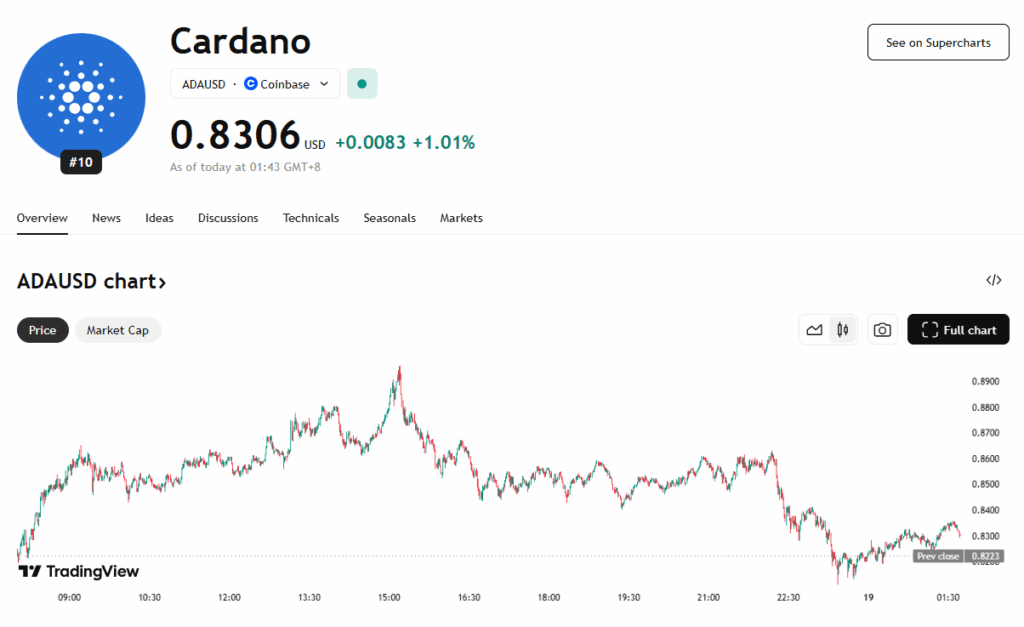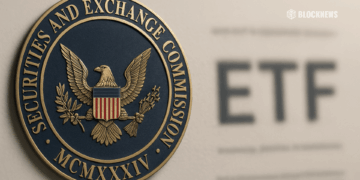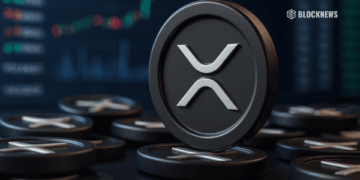- House passed Clarity Act – lets decentralized blockchains become commodities (not securities)
- Cardano likely qualifies – 3,000+ stake pools, on-chain governance, no entity owns >10%
- If approved = ETFs, institutional money, regulatory clarity – ADA already up 16%
WASHINGTON — The U.S. House of Representatives passed landmark cryptocurrency legislation on July 17, 2025, potentially clearing the path for Cardano (ADA) to achieve commodity status alongside Bitcoin and Ethereum. The Digital Asset Market Clarity Act (H.R. 3633) passed 294-134, establishing new criteria that could fundamentally change how digital assets are regulated.
Breaking Down the Clarity Act
The bipartisan legislation, sponsored by Rep. J. French Hill (R-Arkansas), creates a clear distinction between cryptocurrencies regulated as commodities by the CFTC and those classified as securities under SEC oversight. The key innovation: establishing “mature blockchain systems” that qualify for lighter regulatory treatment.
“This legislation provides the regulatory clarity our industry desperately needs,” said Rep. Hill following the vote. The Act defines mature blockchains as decentralized networks “not controlled by any person or group of persons under common control.”
Despite viral social media claims, the Act doesn’t explicitly name Cardano as “Likely Mature.” Instead, it establishes objective criteria including:
- No entity controlling more than 20% of token supply
- Open-source development
- Decentralized governance
- Operational stability over time
Cardano’s Strong Position
Industry analysts believe Cardano stands well-positioned to meet these criteria. The network operates over 3,000 independent stake pools, with no single entity controlling more than 10% of ADA supply. Its September 2024 Chang hard fork introduced fully decentralized governance, allowing ADA holders to vote on protocol changes directly.
“Cardano’s decentralization metrics are among the strongest in the industry,” noted blockchain researcher Sarah Chen. “The University of Edinburgh ranked it as the most decentralized blockchain in 2023, even surpassing Bitcoin in several measures.”
However, questions remain about the continued involvement of founding entities—the Cardano Foundation, Input Output Global (IOHK), and Emurgo. While their influence has diminished significantly, regulators will scrutinize whether they constitute “common control.”
Market Reacts Positively
ADA surged 16% following the House vote, reaching $0.89 as trading volume spiked to $3.09 billion daily. Whale wallets accumulated 120 million ADA tokens in recent weeks, suggesting institutional positioning ahead of potential regulatory clarity.
Charles Hoskinson, Cardano’s founder, predicted a “gigachad bull run” driven by the legislation. “Regulatory certainty will unlock trillions in institutional capital currently sitting on the sidelines,” he stated during a recent livestream.
The pending Grayscale Cardano ETF application, currently under SEC review with an October 2025 deadline, could benefit significantly from commodity classification. Banks and financial institutions would face fewer restrictions offering ADA custody services under CFTC rather than SEC oversight.
What Happens Next
The Senate must now consider its version of crypto market structure legislation. Banking Committee Chairman Tim Scott aims to complete hearings by September 30, with the Trump administration signaling strong support through crypto czar David Sacks.
Once enacted, implementation would proceed rapidly:
- 30 days: SEC/CFTC begin joint rulemaking
- 60 days: Initial frameworks published
- 180 days: Full implementation
Existing blockchains can apply for maturity certification, with automatic approval if the SEC doesn’t object within 60 days—a provision designed to prevent regulatory delays.
Ecosystem Momentum Builds
Cardano’s ecosystem shows strong growth amid regulatory optimism. Total Value Locked in DeFi protocols reached $349 million, up 13% quarter-over-quarter. Major upgrades including the Hydra scaling solution and Midnight privacy sidechain are progressing on schedule.
“We’re seeing accelerated development as teams anticipate clearer regulatory frameworks,” said John Martinez, CEO of Liqwid Finance, Cardano’s largest DeFi protocol. “Commodity status would remove the legal uncertainty that’s held back institutional participation.”
The Stakes for ADA Holders
For the 5.5 million ADA holders worldwide, commodity classification could prove transformative. Analysts project price targets ranging from $1.00 to $2.00 by year-end, though longer-term impacts may prove more significant.
“This isn’t just about price appreciation,” explained crypto attorney Maria Rodriguez. “Commodity status opens doors to ETFs, corporate treasury adoption, and integration with traditional finance that securities classification prevents.”
However, risks remain. Cardano must demonstrate true independence from founding entities while competing networks also vie for favorable classification. The Senate could modify key provisions, and implementation details matter as much as the legislation itself.

Looking Ahead
The crypto industry watches closely as Cardano navigates this regulatory milestone. Success would validate the path from centralized development to decentralized commodity, potentially benefiting other blockchain networks.
“We’re witnessing the maturation of cryptocurrency regulation,” said former CFTC Commissioner Brian Quintenz. “The Clarity Act recognizes that blockchain networks can evolve beyond their origins into truly decentralized systems.”
As the Senate prepares its deliberations, Cardano stakeholders are mobilizing to ensure their network meets all maturity criteria. The next six months will prove decisive in determining whether ADA joins Bitcoin and Ethereum in the exclusive commodity classification club—a development that could reshape the entire cryptocurrency landscape.














